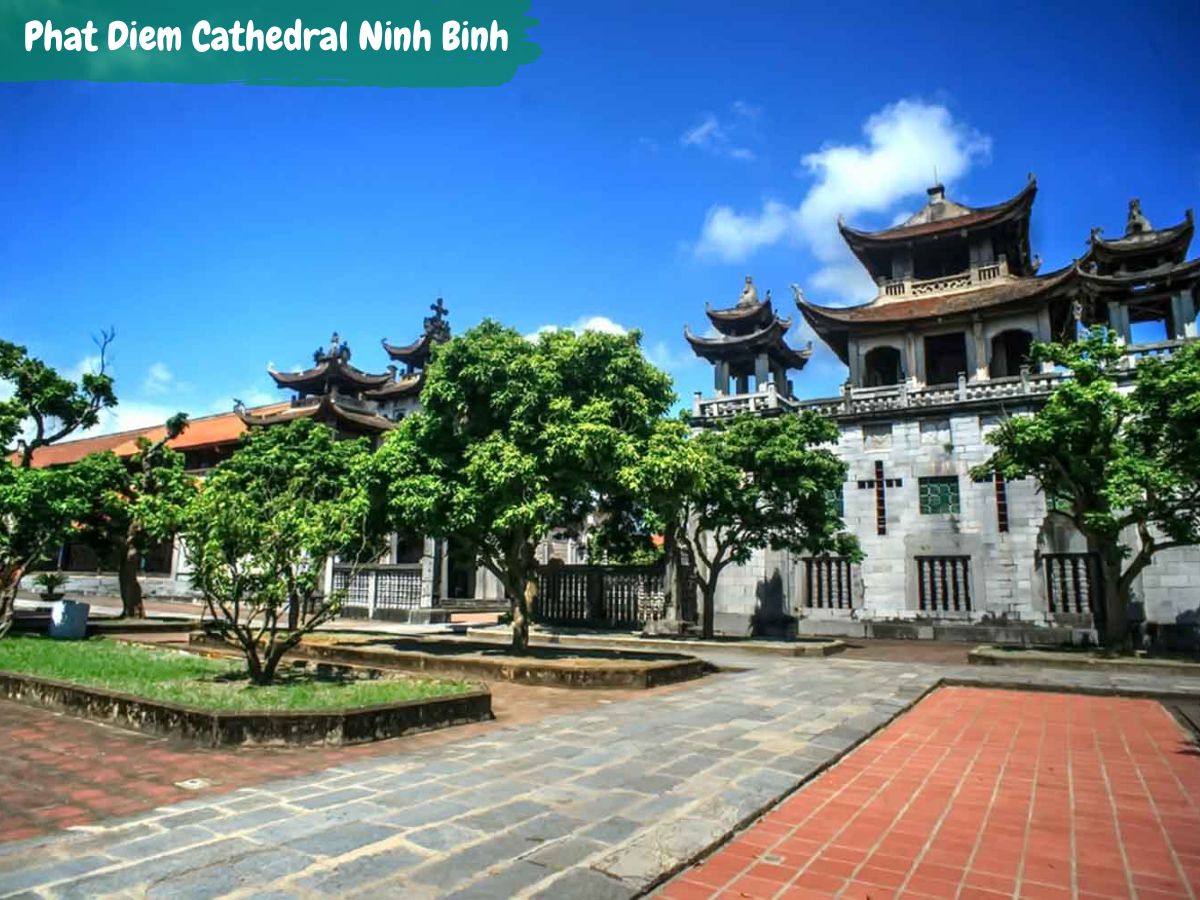Travel Guide, Ninh Binh
Phat Diem Cathedral Ninh Binh – The Catholic Capital of Vietnam
Nestled in the picturesque of Vietnam, Phat Diem Cathedral Ninh Binh stands as a stunning architectural marvel, blending the rich cultural heritage of Vietnam with the influence of European design. This remarkable religious structure, constructed between 1875 and 1899, has become an iconic landmark that captivates visitors from around the world. Beyond its aesthetic allure, the cathedral holds deep historical significance, serving as a testament to the complex interplay between Eastern and Western traditions that has shaped Vietnam’s cultural identity.
Key takeaways
- Phat Diem Cathedral is a true architectural masterpiece that showcases the region’s exceptional craftsmanship and attention to detail.
- The Catholic Capital of Vietnam boasts a profound history and a legacy that is deeply woven into the fabric of the region.
- The unique and intricate architecture of Ninh Binh’s Cathedral are in detail.
- Visitors can experience Ninh Binh’s famous attractions with convenient accessibility.
- The Phat Diem Cathedral makes Ninh Binh a truly convenient and captivating destination for travelers seeking to immerse Vietnam’s spiritual and natural heritage.
Location and How to get there
The Phat Diem Cathedral, one of Vietnam’s most impressive and architecturally unique religious structures, is situated in the heart of the Phat Diem town in the Ninh Binh province. Located approximately 90 km (56 miles) south of Hanoi, the capital city of Vietnam, the cathedral’s picturesque setting along the banks of the Hoang Long River makes it a popular destination for visitors to the region.
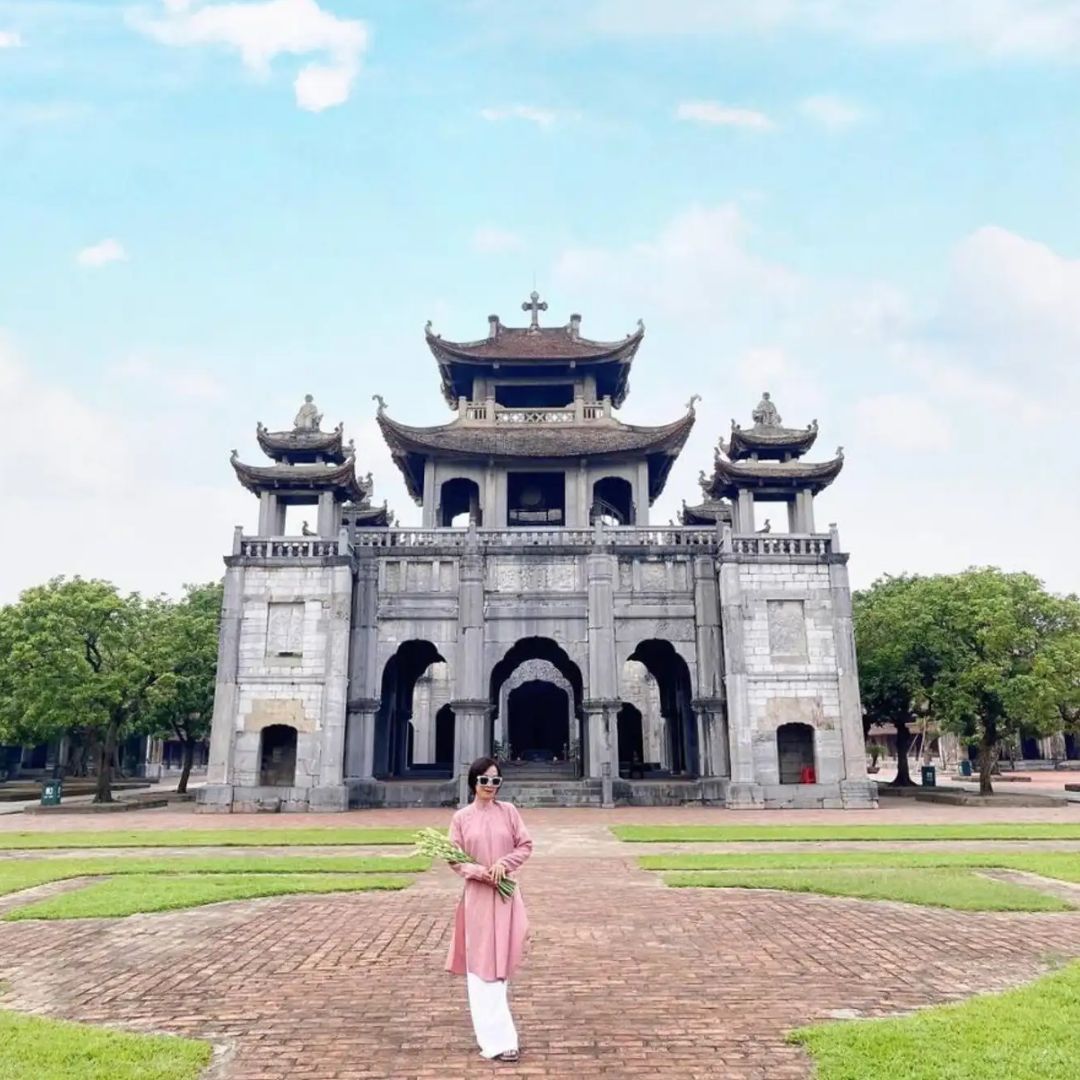
The Phat Diem Cathedral is easily accessible by a number of different modes of transportation. For those driving from Hanoi or other nearby cities, the journey takes around 2-2.5 hours, thanks to the well-maintained highways and local roads that lead directly to the cathedral’s location in the town center. Alternatively, visitors can opt for public transportation, such as buses and minibuses, which connect Phat Diem with the surrounding towns and cities.
For a more organized and hassle-free experience, many travel agencies and tour operators offer day trips or multi-day packages that include a visit to the Phat Diem Cathedral Ninh Binh. These guided tours often provide transportation, as well as the opportunity to combine the cathedral visit with other popular attractions in the Ninh Binh region, such as the Trang An Scenic Landscape Complex and the boat tours along the Ngo Dong River.
Regardless of the mode of transportation, the Phat Diem Cathedral’s accessibility and central location within the town make it a must-visit destination for those exploring the cultural and architectural wonders of northern Vietnam.
When it comes to visiting the Phat Diem Cathedral, an architectural and cultural gem in northern Vietnam, the optimal time of year can vary depending on a traveler’s preferences and priorities. The cathedral’s picturesque setting and mild climate make it an appealing destination throughout much of the year, but certain times may offer a more ideal visiting experience.
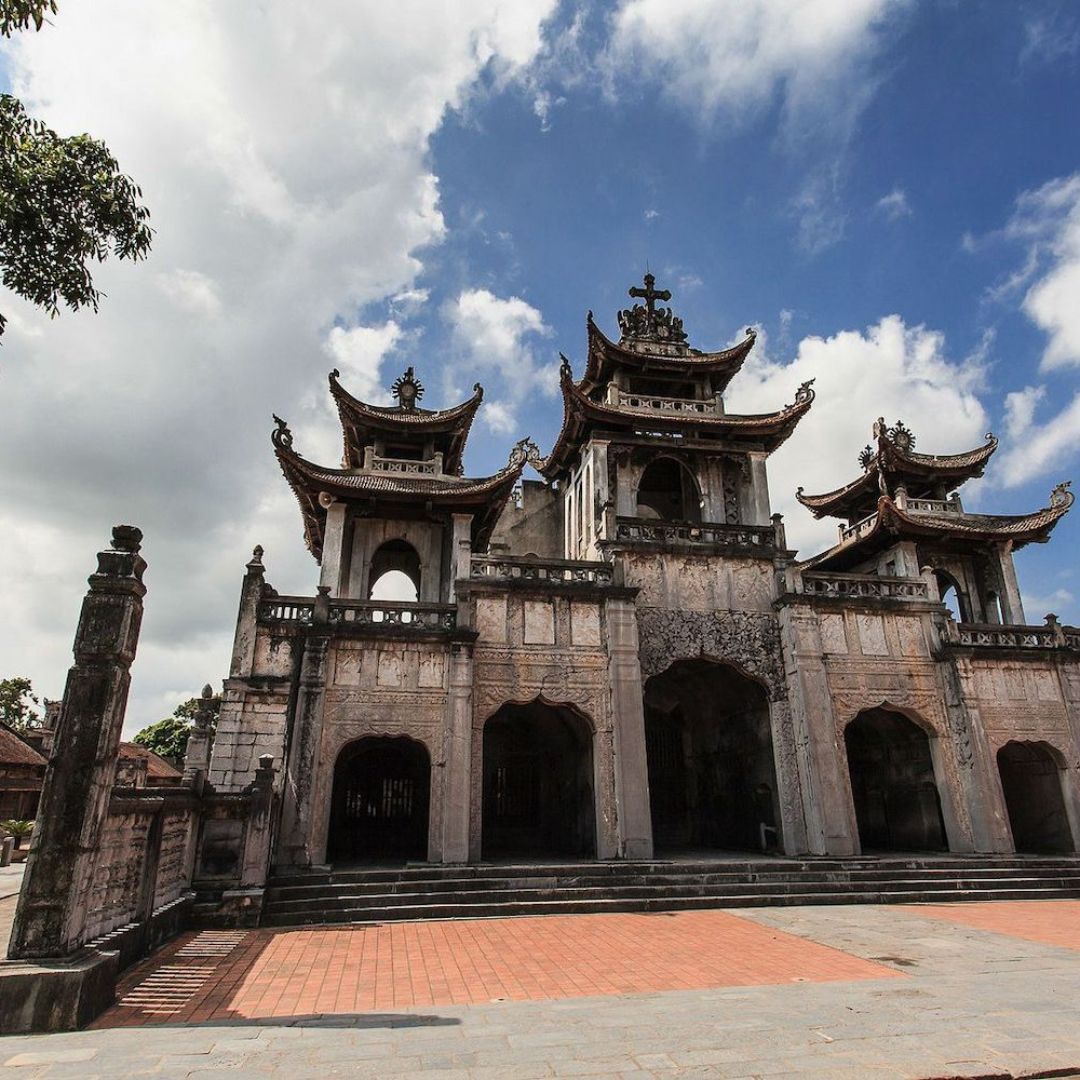
The most comfortable weather for exploring the Phat Diem Cathedral is typically during the dry season, which spans from October through April. During these months, visitors can expect clear skies, lower humidity, and average temperatures ranging from a comfortable 20-30°C- perfect conditions for wandering the grounds, admiring the intricate architecture, and capturing memorable photographs.
However, it’s important to note that the Phat Diem Cathedral is a popular tourist attraction, particularly during peak travel seasons. The Vietnamese New Year (Tet) holiday in January/February and the summer months tend to draw larger crowds to the site. For those seeking a more peaceful and less crowded experience, the shoulder seasons of March-May or October-November may be preferable.
Visitors with a particular interest in cultural immersion may also time their visit to coincide with the annual Phat Diem Cathedral Festival, held in the first lunar month (usually February or March). This vibrant celebration features traditional music, dance performances, and religious ceremonies, offering a unique opportunity to witness the cathedral’s cultural significance firsthand.
Ultimately, the best time to visit the Phat Diem Cathedral Ninh Binh depends on a traveler’s individual preferences and priorities. Whether seeking optimal weather, smaller crowds, or cultural experiences, the cathedral’s allure and accessibility make it a rewarding destination to explore throughout much of the year.
History of the Church
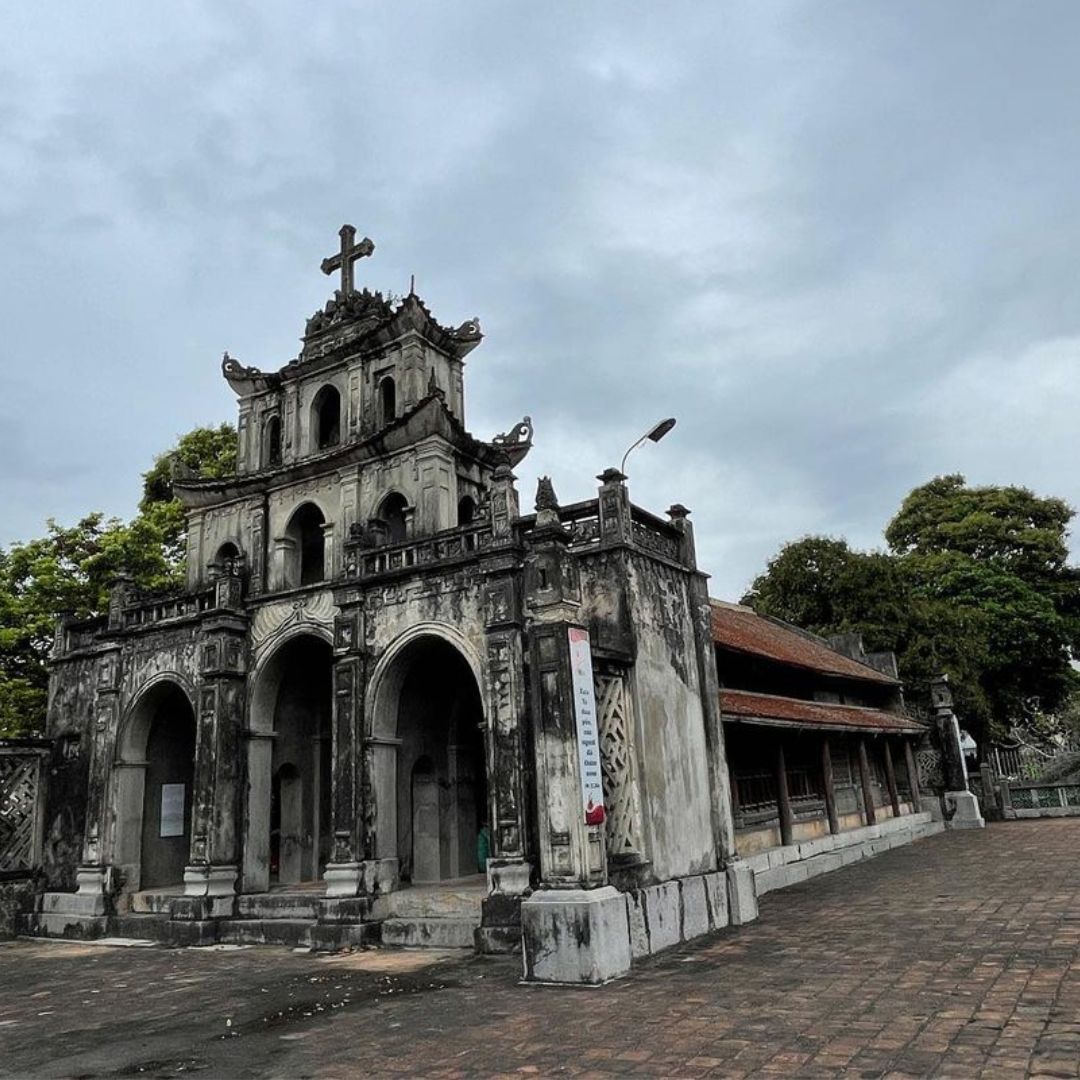
The Phat Diem Cathedral, an architectural and cultural treasure in northern Vietnam, boasts a rich and captivating history that spans more than a century. The cathedral’s origins can be traced back to the mid-19th century, when construction first began in 1875 under the direction of Catholic priest Father Tran Van Doan.
Father Tran Van Doan’s vision for the cathedral was to create a structure that blended traditional Vietnamese design elements with European influences, resulting in a truly unique and awe-inspiring architectural style. Working closely with local craftsmen, the construction of the cathedral’s main nave, side chapels, and iconic bell towers was completed by 1899, showcasing the skilled workmanship and artistry that went into this monumental project.
Over the decades that followed, the Phat Diem Cathedral underwent several expansions and renovations to enhance its size and architectural features. In the early 20th century, additional side chapels and a baptistery were added to the complex, further expanding the cathedral’s footprint and grandeur. Significant restoration work was also carried out in the 1930s to repair and maintain the structure, ensuring its preservation for future generations.
The cathedral’s history is not without its challenges, however. During the tumultuous periods of the First Indochina War (1946-1954) and the Vietnam War (1955-1975), the Phat Diem Cathedral and its surrounding town faced the harsh realities of wartime conflict. While the cathedral sustained some damage from bombings and artillery fire, it was ultimately spared from complete destruction, and subsequent restoration efforts were undertaken to repair any damage and restore the cathedral to its former glory.
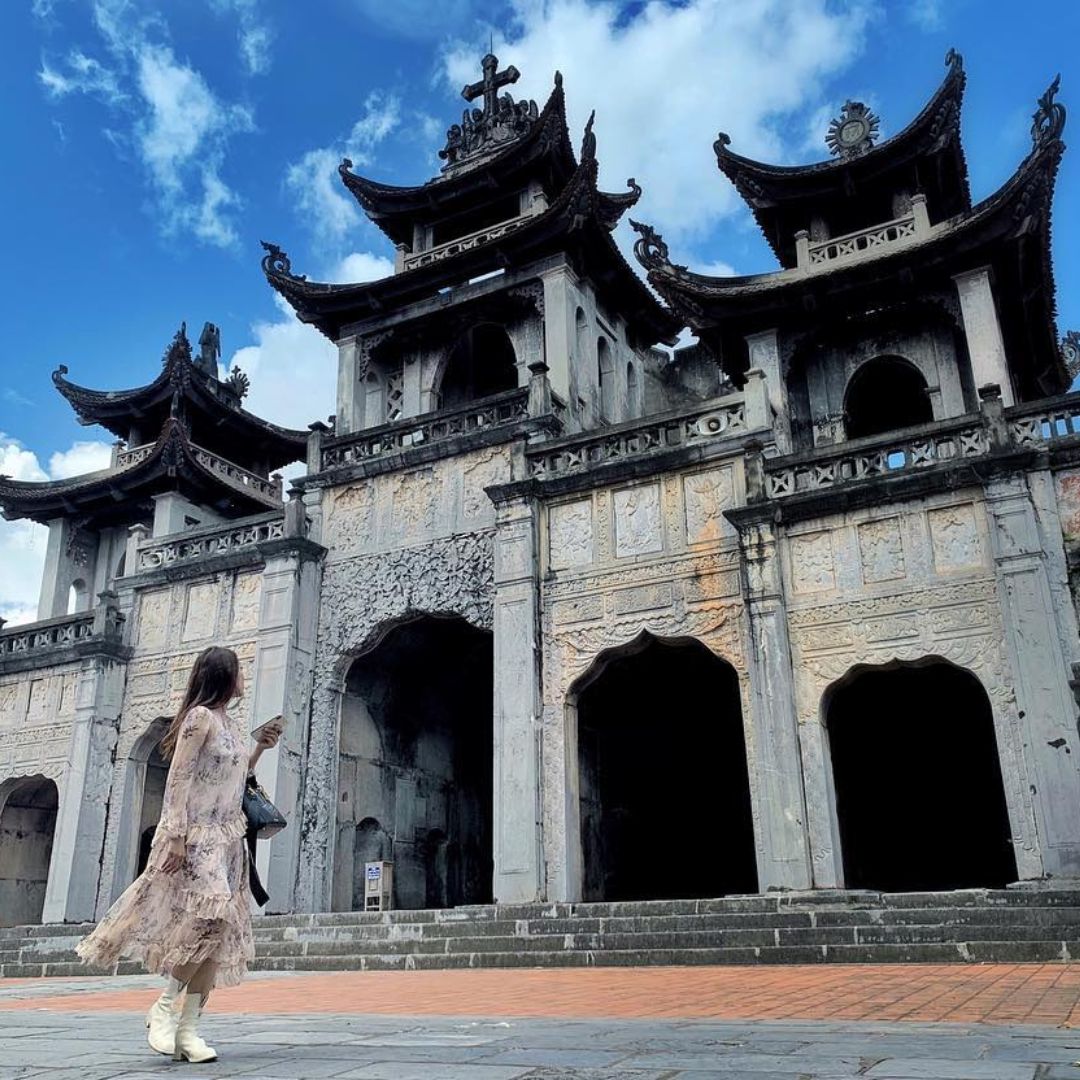
Today, the Phat Diem Cathedral Ninh Binh stands as a testament to the enduring spirit and resilience of the Vietnamese people. Recognized as one of the country’s most architecturally unique and culturally significant religious structures, the cathedral’s blending of Vietnamese and European design elements has made it a renowned landmark and a cherished icon of northern Vietnam’s rich cultural heritage. Visitors from around the world flock to the Phat Diem Cathedral to experience its historic and artistic significance, ensuring that this remarkable structure will continue to captivate and inspire for generations to come.
Unique Architecture Features
The Phat Diem Cathedral Ninh Binh is renowned for its unique and captivating architectural features, which blend traditional Vietnamese design elements with European influences. The cathedral’s architect, Father Tran Van Doan, played a pivotal role in shaping this distinctive style.
One of the most striking aspects of the Phat Diem Cathedral’s architecture is the use of stone, wood, and tile in its construction. Unlike many traditional Vietnamese temples and pagodas which rely heavily on wood, the Phat Diem Cathedral features extensive use of local stone, including granite and limestone, which lend an air of solidity and grandeur to the structure.
The cathedral’s roof design is another distinctive feature, incorporating both Vietnamese and European elements. The main roof, which covers the central nave, features a series of gently curving eaves that are reminiscent of traditional Vietnamese architectural styles. However, these are complemented by the European-inspired bell towers, which rise gracefully from the corners of the structure, adding visual interest and balance to the overall design.
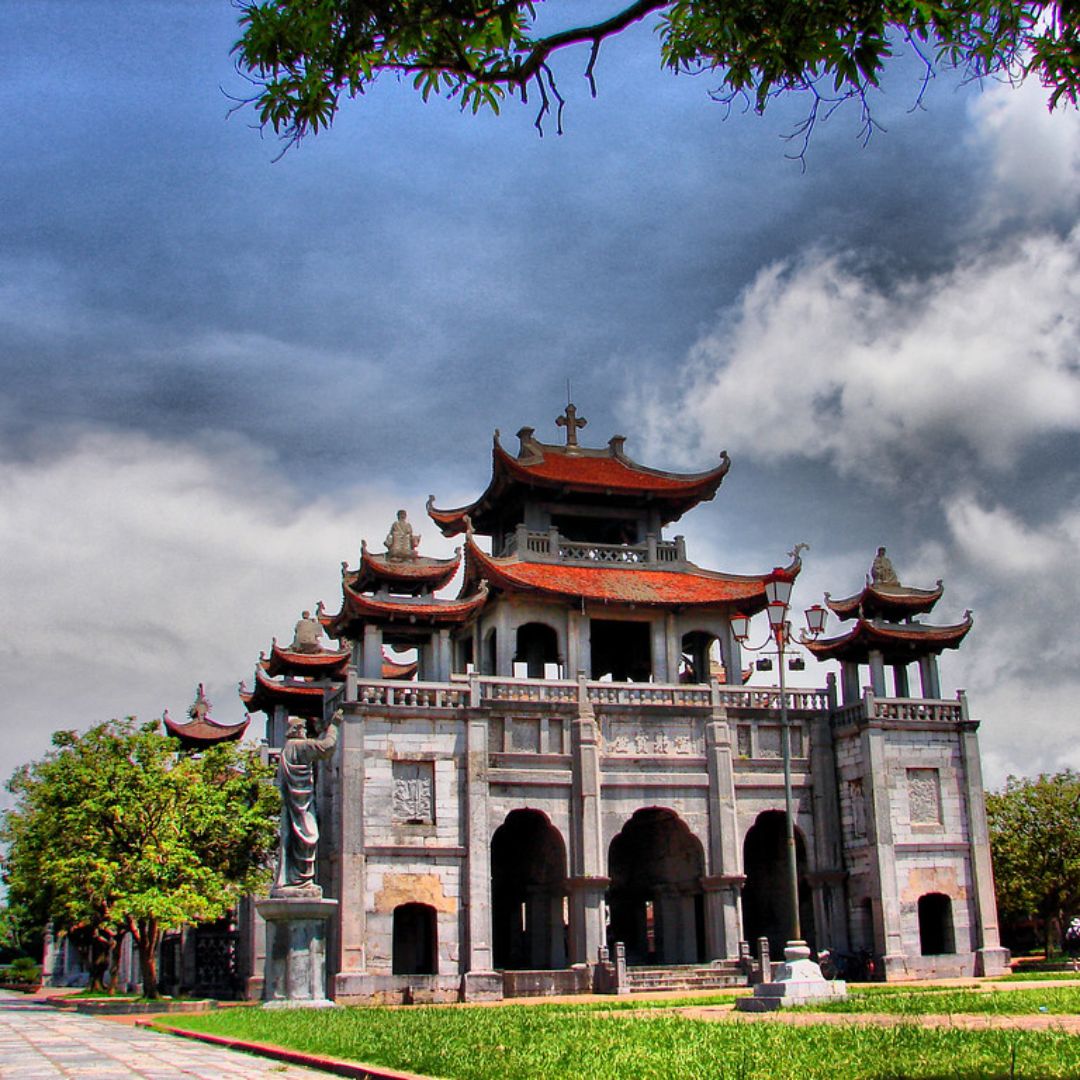
Another unique aspect of the Phat Diem Cathedral’s architecture is the intricate stone carvings and decorative elements that adorn the exterior. These include detailed reliefs and sculptures, depicting religious imagery, floral motifs, and other symbolic designs. These carvings not only add visual depth and texture to the building but also reflect the skilled craftsmanship of the local artisans who worked on the cathedral’s construction.
The interior of the Phat Diem Cathedral Ninh Binh is equally impressive, with a spacious and airy central nave that is flooded with natural light, thanks to the large windows that line the walls. The cathedral’s altars and shrines are adorned with ornate wood carvings, gilded decorations, and stained glass, creating a warm and reverent atmosphere that invites visitors to pause and reflect.
Throughout the cathedral, the blending of Vietnamese and European architectural elements is evident, reflecting Father Tran Van Doan’s vision to create a structure that would be both aesthetically stunning and culturally significant. The result is a truly unique and captivating building that has become one of the most iconic landmarks in northern Vietnam, drawing visitors from around the world to marvel at its exceptional design and craftsmanship.
Exploring Phat Diem Cathedral interior
The Main Cathedral
The cathedral is the centerpiece and highlight of the overall complex. The cathedral, officially known as the Cathedral of Our Lady of the Rosary, began construction in 1891. It is 74 meters long, 21 meters wide, and 15 meters high, with four roofs.
Inside the main cathedral, there are 52 supporting columns arranged in 6 rows, dividing the cathedral space into 9 sections. The main entrance and interior of the cathedral feature a towering, grand Western architectural style, while the Eastern architectural elements are expressed through the arrangement of the columns and beams, as well as the graceful, delicate, and intricate carved floral patterns.
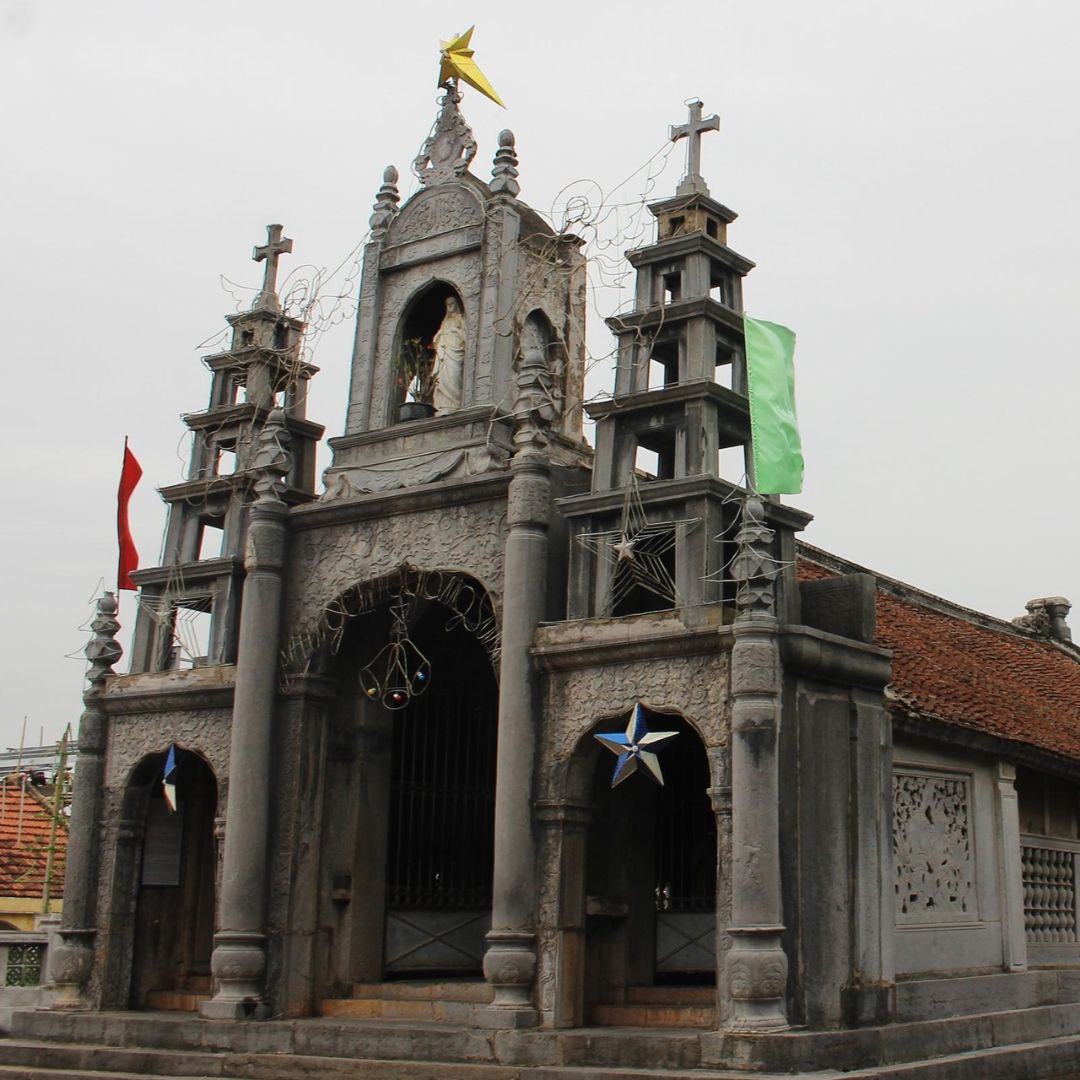
The sacred element within the cathedral is the presence of 6 sunken stone slabs on the floor, which are the burial sites of 6 bishops interred underneath the cathedral. This harmonious blend of Western and Eastern architectural styles, along with the reverent burial sites of the bishops, imbue the Phat Diem Cathedral Ninh Binh with a profound sense of spiritual significance and architectural magnificence.
The Church of the Sacred Heart of Mary
Next to the grand cathedral is a stone church because its walls, pillars, ground, bars to tie beams are made of stone. The church was started in 1883 and has dimensions of 15.3m long, 8.5m wide, and 6m tall. When people step into the church, they can feel a magnetic field or energy emanating from the stone slabs on the floor.
The inside of the chapel is decorated with numerous intricately carved reliefs that represent the four seasons of the year, including chrysanthemum, bamboo, fir, and apricot trees. Around Phat Diem Cathedral Ninh Binh, there are a lot of beautiful stone caves and artificial mountains.
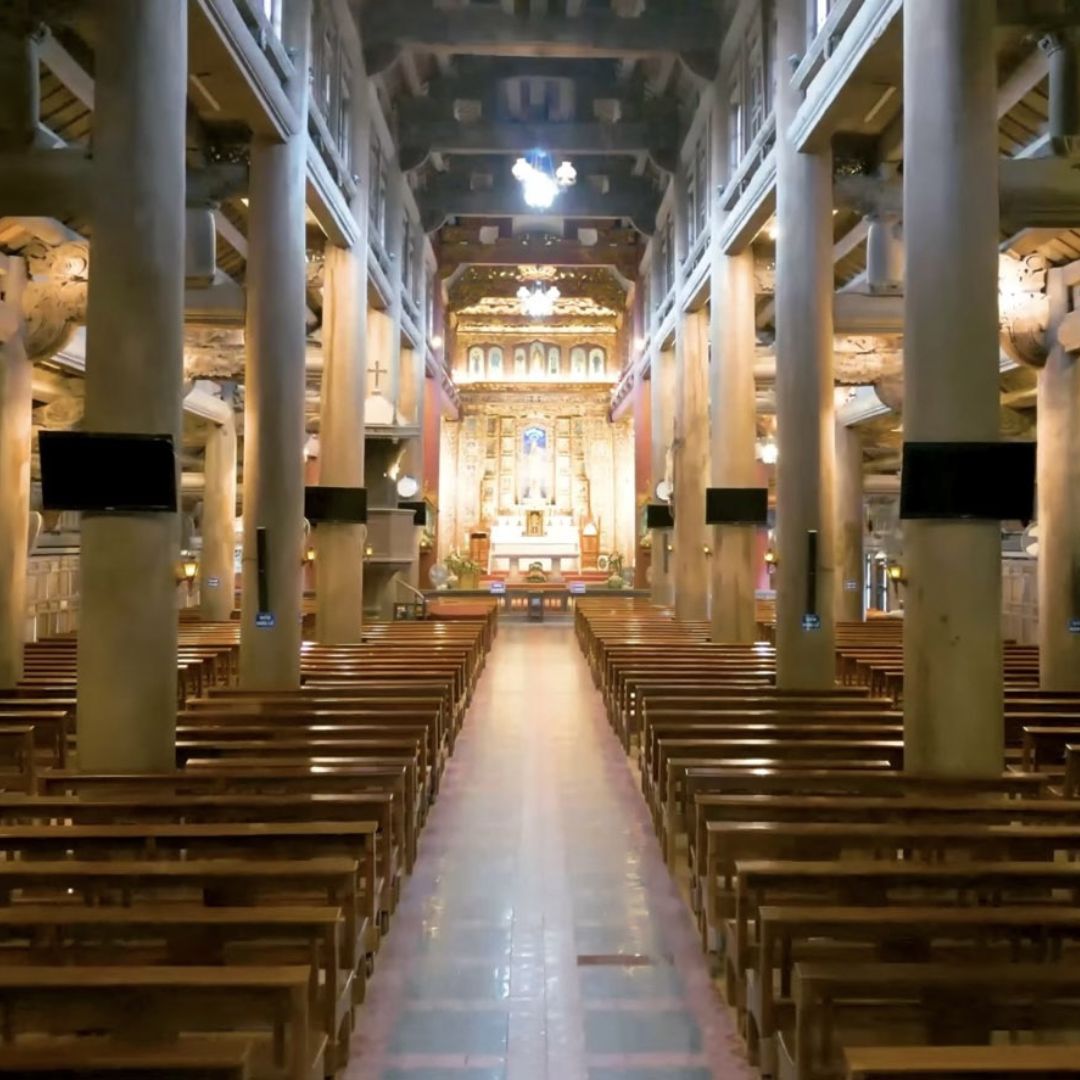
On the outside of the church are two spires that resemble the Pen Tower at Hoan Kiem Lake, but the difference here is that the symbol of the cross replaces the pen. The central spire is beautifully carved, with a relief sculpture depicting a heart pierced through, symbolizing the Immaculate Heart of the Blessed Virgin Mary. Though Mary witnessed the death of Jesus, she did not weep, for her heart embraced the love for all of us.
The altar dedicated to the Blessed Mother within the church is made of stone and polished with dried banana leaves. Under the skilled hands of the artisans, the stone has been transformed into myriad shapes, becoming soft and graceful. On the large stone slabs, one can find images of the phoenix, lotus flowers, as well as familiar motifs from Vietnamese folk art such as pine, chrysanthemum, bamboo, and plum blossoms.
Phuong Dinh (the Bell town)
Phat Diem Cathedral is a complex comprising a lake, a cathedral, a stone church, Phuong Dinh (bell house) and three artificial grottoes. The square lake on the main road leading to the cathedral immediately draws in visitors. In the middle of the lake, there is a small island with a statue of Jesus Christ. Phuong Dinh easily becomes the next eye-catching monument, with stone carvings on both sides of the walls. It is three stories long, 24 meters wide, and 25 meters high. Large green flagstones cover the first floor. A massive bell and a large drum are located on the upper and middle floors, respectively.
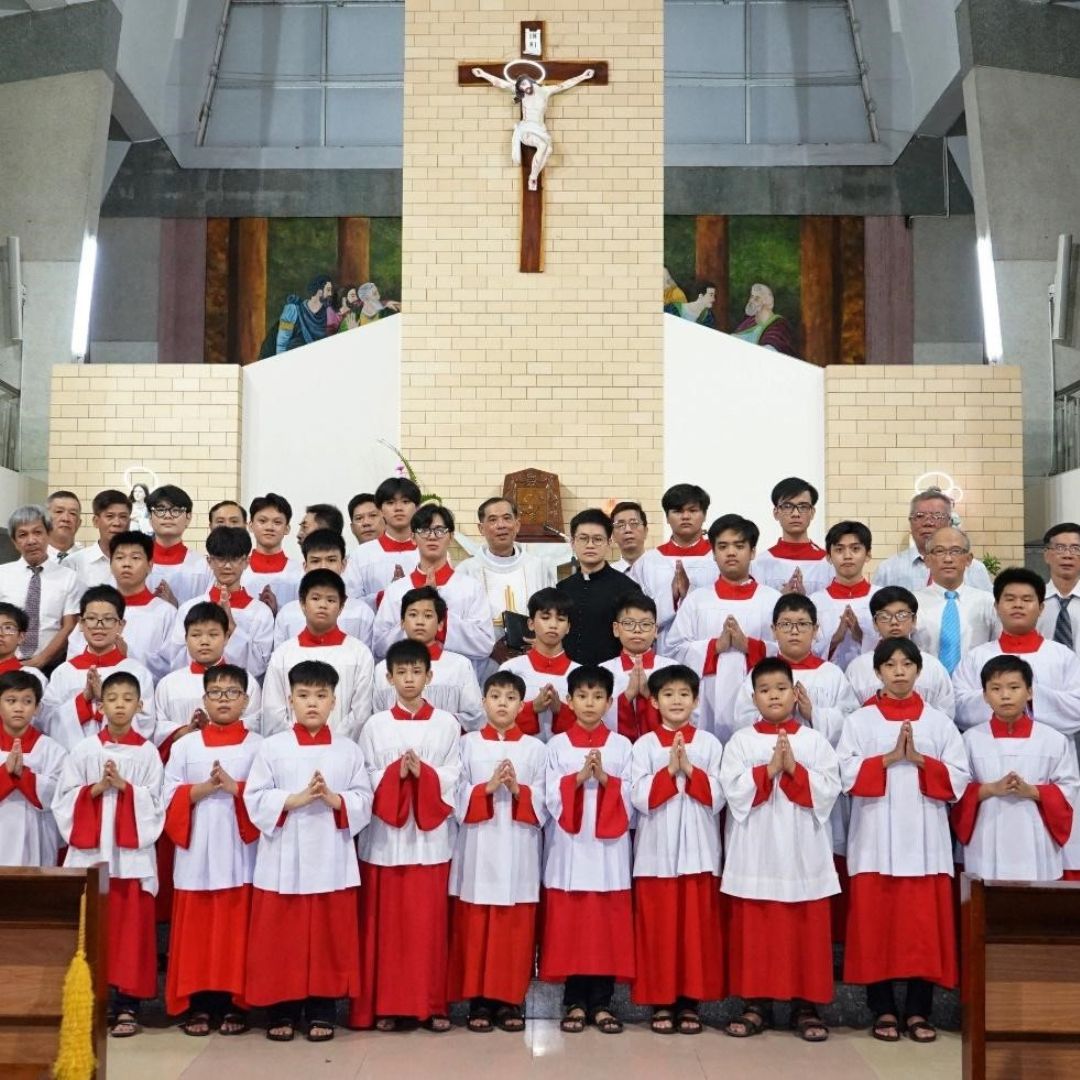
This multi-tiered structure is a masterpiece of woodcarving, featuring intricate designs and motifs that blend Vietnamese and European influences. The Phuong Dinh serves as a platform for the main altar, and its ornate carvings and decorations draw the eye upward, creating a sense of grandeur and spiritual elevation.
As you approach the Phuong Dinh at Phat Diem cathedral Ninh Binh, take a moment to admire the detailed craftsmanship on display. The carved dragons, phoenixes, and other symbolic creatures that adorn the structure are not only visually captivating but also hold deep cultural and religious significance within the Vietnamese tradition. The interplay of light and shadow on the Phuong Dinh’s surfaces adds to the overall sense of mystique and reverence that permeates this architectural centerpiece.
Both the Phuong Dinh and the Mother’s Heart shrine are integral parts of the Phat Diem Cathedral’s rich interior, reflecting the cathedral’s unique blend of Vietnamese and European artistic and religious elements. By taking the time to explore these extraordinary features, you’ll gain a deeper understanding and appreciation for the cathedral’s cultural and spiritual significance.
Others Attractions nearby the Phat Diem Cathedral
The Phat Diem Cathedral is situated in the picturesque Ninh Binh Province, which is known for its stunning natural landscapes. After visiting the Phat Diem Cathedral Ninh Binh, tourists can enjoy some nearby famous destinations.
Visitors can explore the Bich Dong Pagoda, a historic Buddhist temple complex located just a few kilometers from the cathedral. The Tam Coc-Bich Dong region, known as “Ha Long Bay on Land,” offers boat tours and hiking opportunities to experience the region’s natural beauty.
Just 20 km from the cathedral lies the Trang An Tourism Complex, a renowned scenic area renowned for its breathtaking riverside mountains and impressive network of natural caves. Visitors can embark on tranquil boat tours to weave through the serene waterways and discover hidden gems like the Hang Mua, Hang Toi, and Hang Se caves. Beyond the waterways, the complex also presents opportunities for hiking and mountain climbing, rewarding adventurers with stunning vistas from sites like Bai Dinh Mountain.

For those seeking to delve deeper into Ninh Binh’s natural wonders, the Cuc Phuong National Park, the largest nature reserve in Southeast Asia, beckons with its rich biodiversity. Trekking through the protected park, visitors can spot a variety of rare flora and fauna, making for an unforgettable wildlife experience.
Completing the tapestry of attractions surrounding the Phat Diem Cathedral is the serene Ho Son Tinh lake, offering a peaceful respite amidst the lush, verdant landscapes. Strolling along the lake’s shores or taking a leisurely boat ride allows visitors to bask in the tranquil ambiance of this hidden gem.
Exploring this diverse array of natural and cultural riches surrounding the Phat Diem Cathedral provides travelers with a well-rounded understanding of Ninh Binh’s captivating essence, making it a must-visit destination in Vietnam.
Conclusion
The Phat Diem Cathedral Ninh Binh, Vietnam, is a true masterpiece of architectural fusion, seamlessly combining the distinctive elements of Vietnamese temple design with the grandeur of European Romanesque and Gothic styles. This remarkable cathedral stands as a testament to the cultural exchange and artistic collaboration that have shaped Vietnam’s rich heritage.
As both an active place of worship and a cherished cultural heritage site, the Phat Diem Cathedral continues to captivate and inspire visitors from around the world, serving as a powerful symbol of the country’s enduring spirit and the enduring legacy of its past. Through its enduring significance, the Phat Diem Cathedral remains a testament to the profound impact that cultural exchange and artistic innovation can have on the built environment, and a source of immense pride for the people of Vietnam.

